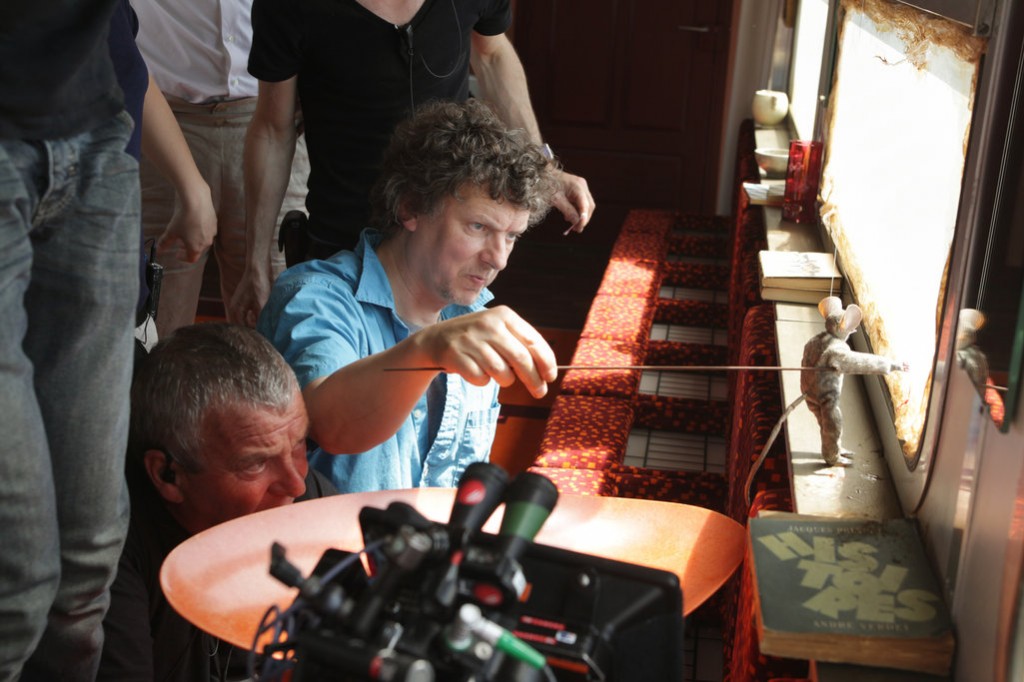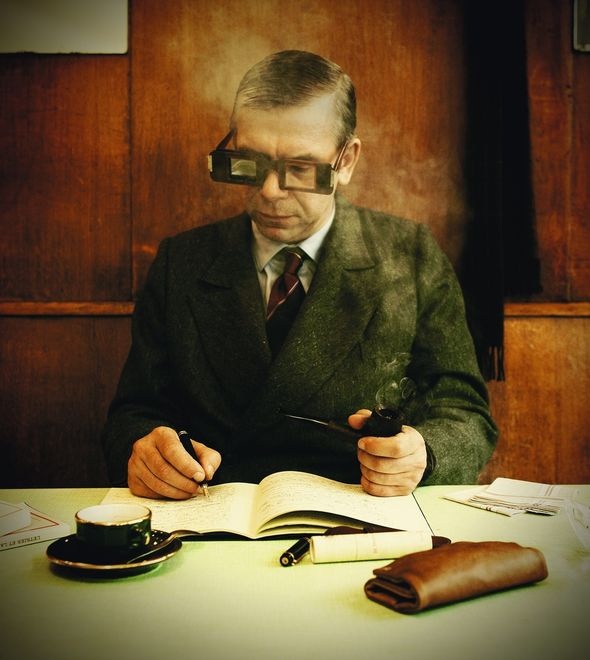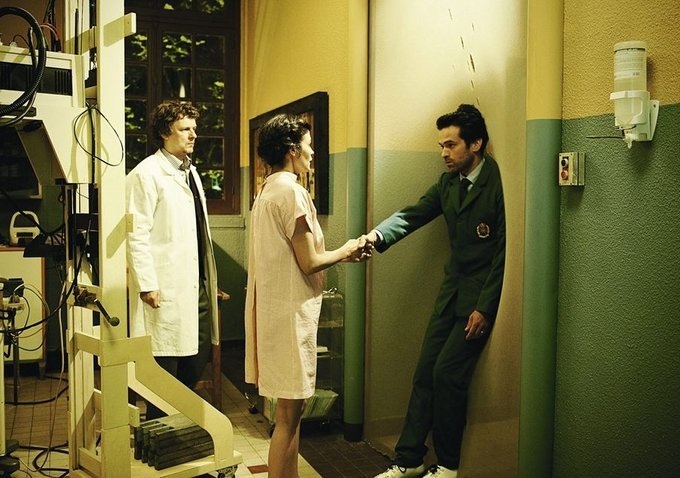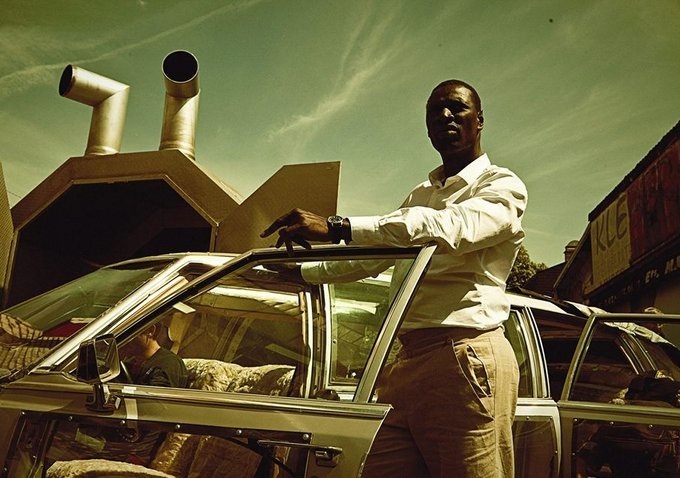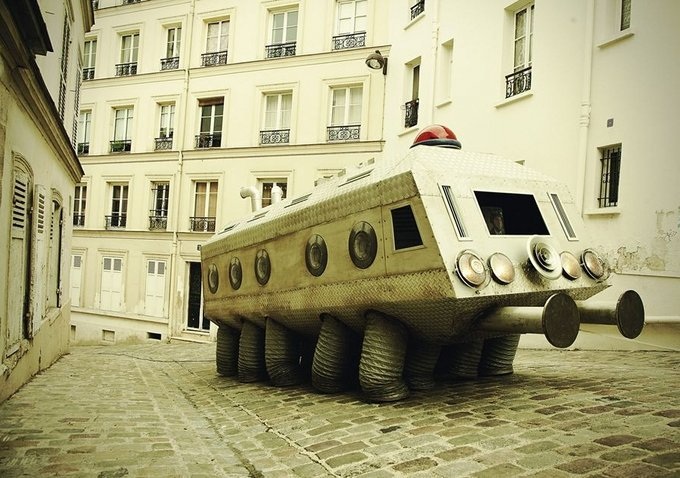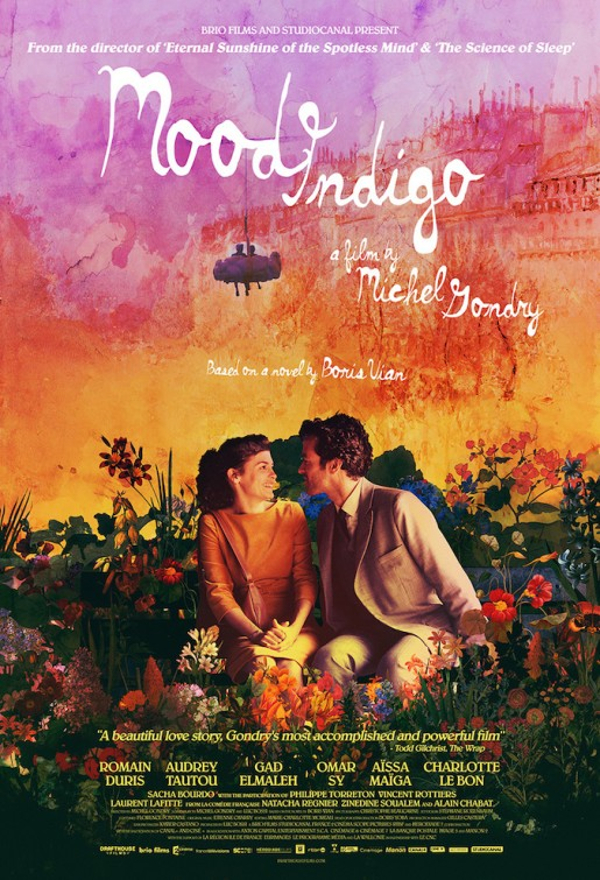INHALE is a cultural platform where artists are presented, where great projects are given credit and readers find inspiration. Think about Inhale as if it were a map: we can help you discover which are the must-see events all over the world, what is happening now in the artistic and cultural world as well as guide you through the latest designers’ products. Inhale interconnects domains that you are interested in, so that you will know all the events, places, galleries, studios that are a must-see. We have a 360 degree overview on art and culture and a passion to share.

You wouldn’t notice Michel Gondry unless you were looking for him. The 51-year-old French director of such fantastical, visually mesmerizing movies as Eternal Sunshine of the Spotless Mind, The Science of Sleep and Be Kind Rewind is thin, cool, and reserved, though his boyish blue eyes contain a mischievous glimmer. When he speaks about the subjects that impassion him — including his latest film, Mood Indigo, which premiered in the US in limited release this past weekend — he exudes infectious energy.
As it happens, Mood Indigo is perhaps Gondry’s most technologically intricate movie, stuffed with stop-motion effects and elaborate Rube Goldberg-style machines. Based on a seminal 1947 French novel L’Écume des jours (Froth on the Daydream, adapted as Foam on the Daze in the US), the film is a dreamy romantic comedy that follows a wealthy French dilettante, Colin (Romain Duris), as he woos a woman, Chloe (Audrey Tautou), who falls ill with a peculiar sickness: a flower growing inside her chest. I sat down with Gondry in New York to ask ask him about the film, his upcoming projects, and his relationship with technology old and new. Mild spoilers follow

Colin (Romain Duris) and Chloe (Audrey Tautou) take a ride in a cloud car in ‘Mood Indigo’ by Michel Gondry. (Drafthouse Films)
Aptly named after the freewheeling Duke Ellington composition, Michel Gondry’s latest film Mood Indigo is an adaptation of Boris Vian’s cult magic-realist novel L’Écume des Jours or Froth on the Daydream. “The big problem here is that Vian belongs to everyone,” says Gondry, who co-wrote the experimental film’s script. “I had to take it detail by detail, inventing lots of objects and using my imagination like a kind of controlled chaos.” Cut from the same cloth as his much-lauded hits Eternal Sunshine of the Spotless Mind and The Science of Sleep, the film tells the tale of a doomed romance between Chloé and Colin (played by Audrey Tautou and Romain Duris) set in an off-kilter world where Jesus flies around in a rocket ship. Giddy set pieces involving stop-motion go-karts and mechanical clouds betray Gondry’s usual signature preference for homespun special effects over CGI.
The surreal narrative of Mood Indigo flourishes as objects respond to the character’s behavior like a jazz ensemble: when grave illness strikes Chloé, her apartment starts to shrink and color film gives way to black and white melancholy. “I don’t see [people] age, but I see their photos growing youthful,” says Gondry, whose unfettered imagination saw him turn a bleach bottle into the Apollo space rocket as a child, and then apply the same idiosyncratic eye to music videos for acts such as Björk, White Strikes and, most recently, Metronomy.
Michel Gondry: Mood Indigo on Nowness.com
Set in a charmingly surreal Paris, Duris plays wealthy bachelor Colin, whose hobbies include developing his pianocktail (a cocktail-making piano) and devouring otherworldly dishes prepared by his trusty chef Nicolas (Omar Sy, The Untouchables, X-Men: Days Of The Future Past). When Colin learns that his best friend Chick (Gad Elmaleh, The Valet), a fellow acolyte of the philosopher Jean-Sol Partre, has a new American girlfriend, our lonely hero attends a friend’s party in hopes of falling in love himself. He soon meets Chloé (Tautou) and, before they know it, they’re dancing to Duke Ellington and plunging headfirst into a romance that Gondry rapturously depicts as only he can. Their whirlwind courtship is tested when an unusual illness plagues Chloe; a flower begins to grow in her lungs. To save her, Colin discovers the only cure is to surround Chloe with a never-ending supply of fresh flowers.
Mood Indigo was Nominated for three 2014 César Awards: Étienne Charry (Best Original Music), Florence Fontaine (Best Costume) and Stéphane Rozenbaum (Best Production Design) and also stars Charlotte Le Bon (Yves Saint Laurent, To Reach the Clouds) and Aïssa Maïga.
He collaborated with the production designer Stéphane Rozenbaum, who helped build the whimsical but handmade world of Mr. Gondry’s 2006 film, “The Science of Sleep.” “Mood Indigo” teems with curious inventions; one of the more intriguing ones is the “pianocktail,” a piano programmed to mix and dispense drinks. In one scene, Colin (Romain Duris) shows his friend Chick (Gad Elmaleh) how it works. Speaking recently by phone from Paris, Mr. Gondry and Mr. Rozenbaum explained how they came up with a more literal version of a piano bar.
At its most basic, the pianocktail creates drinks according to the music being played. Notes correspond with numbers above the keys. Those numbers connect to tubes that release spirits and other ingredients (ice, mint, a little bit of egg) into glasses. While the filmmakers didn’t build a completely functional cocktail-making piano, several parts had to be operable for the shoot. So the keys actually link to lights that flash when notes are played. “There is no CGI here,” Mr. Gondry said. “It was all done in camera with practical effects.” The front of the piano was carved open to expose the strings and make the instrument feel more like a scrappy invention. Mr. Rozenbaum and his team spent three months building the entire thing.
- via drafthousefilms.com and nytimes.com



